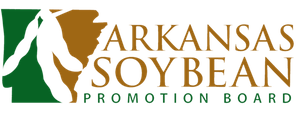Animal Ag Important to Arkansas’ Economy, Food Supply
Whether you’re a lawyer, a pilot or even a farmer, jobs in every industry support economic growth, and animal agriculture in Arkansas supported 68,000 jobs this past year, according to the recent United Soybean Board-funded Animal Agriculture Economic Analysis. A successful animal ag industry also benefits the soybean farmers who depend on animal ag as the biggest market for soybean meal.
The report also outlines the economic benefits the poultry and livestock sectors provide at the state and national levels. In 2012, animal ag provided the following benefits to Arkansas’ economy:
- $12.6 billion in total economic output
- A $2.1 billion impact on household incomes
- $655 million in income and property taxes paid
Nationally, the animal ag industry supported 1.8 million jobs and provided $346 billion in total economic output, according to the study. The sector also added $60 billion to American household incomes and paid $21 billion in income and property taxes.
The partnership between soybean farmers and the animal ag sector helps sustain local farms and produces safe and reliable food for the rest of the world.
“It’s important that poultry and livestock farmers and soybean farmers across the state continue to work together,” says Robert Stobaugh, a checkoff farmer-leader from Atkins, Ark. “A healthy animal ag sector supports our local and state economies, our soybean demand and our food supply.”
According to the study, poultry are the biggest soybean meal eaters in Arkansas, consuming 79 percent, followed by turkeys at 8 percent and egg-laying hens at 4 percent.
Poultry, swine and other livestock consume about 97 percent of the supply of U.S. soybean meal every year in their feed. Last year in Arkansas, animal ag used an estimated 1.7 million tons of soybean meal, or the meal from more than 70.5 million bushels of soybeans. Overall, U.S. poultry, livestock and fish farmers used more than 30 million tons (the meal from 1.26 billion bushels) in the 2011/12 marketing year, which is an increase of 1 million tons (meal from 42 million bushels) from the previous year.
The 70 farmer-directors of USB oversee the investments of the soy checkoff to maximize profit opportunities for all U.S. soybean farmers. These volunteers invest and leverage checkoff funds to increase the value of U.S. soy meal and oil, to ensure U.S. soybean farmers and their customers have the freedom and infrastructure to operate, and to meet the needs of U.S. soy’s customers. As stipulated in the federal Soybean Promotion, Research and Consumer Information Act, the USDA Agricultural Marketing Service has oversight responsibilities for USB and the soy checkoff.
For more information on the United Soybean Board, visit us at www.UnitedSoybean.org
Visit us on Facebook: www.facebook.com/UnitedSoybeanBoard
Follow us on Twitter: www.twitter.com/unitedsoy
View our YouTube channel: www.youtube.com/user/UnitedSoybeanBoard
###
© 2013 United Soybean Board. All Rights Reserved. [50725–PS]
